The F-150 Plan
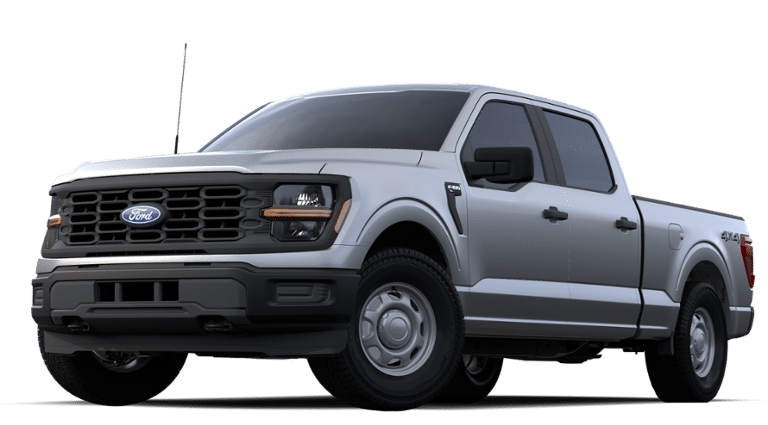
As much as I like to think I want a truck for getting to that far flug place most vehicles simply cannot get to, the reality is most of what I need a truck for is driving a long ways on forest roads with a lot of gear. This gear could be for car camping, kayaking, skiing or doing a family raft trip. Either way, it typically involves a few hours on pavement followed by an hour or more on dirt on progressively deteriorating roads to get to great places.
For a significant portion of my life, this need was easily met with a first generation Toyota Tacoma. These trucks, for one person, are almost as close to perfect as you can possibly get. They can go almost anywhere you want and are a blast to drive...so much fun.
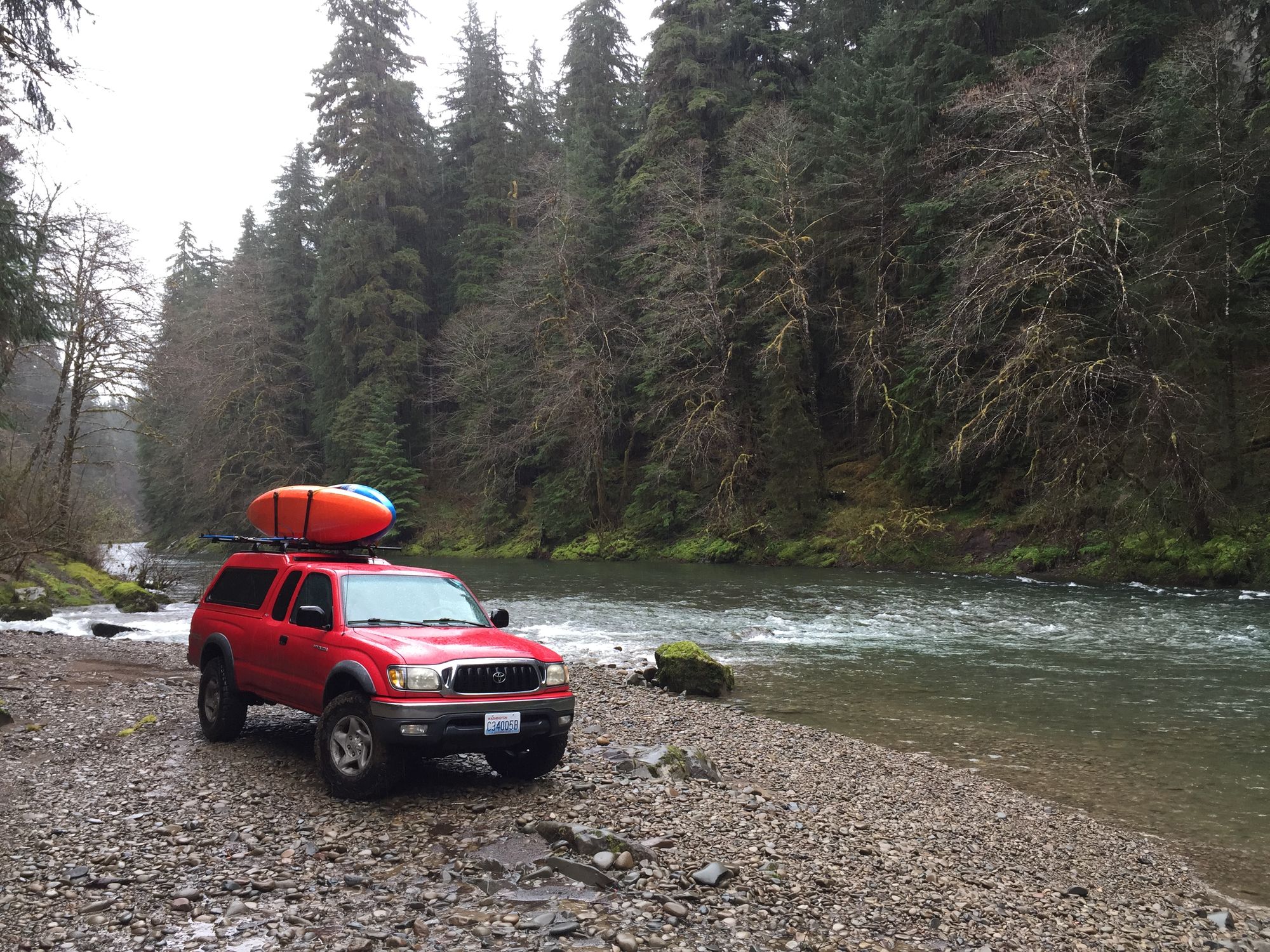
When family life necessitated four doors, we traded the 2001 Tacoma for a four-door 2016 Tacoma. Since we had to pre-order just to get one, I checked the manual transmission box. I learned on a manual in the early 90's, and love driving them. It turns out my wife vehemently does not. Consequently, ever since getting it, she has been hinting at wanting to replace it with something automatic. Lately, these, "hints," have been getting increasingly direct.
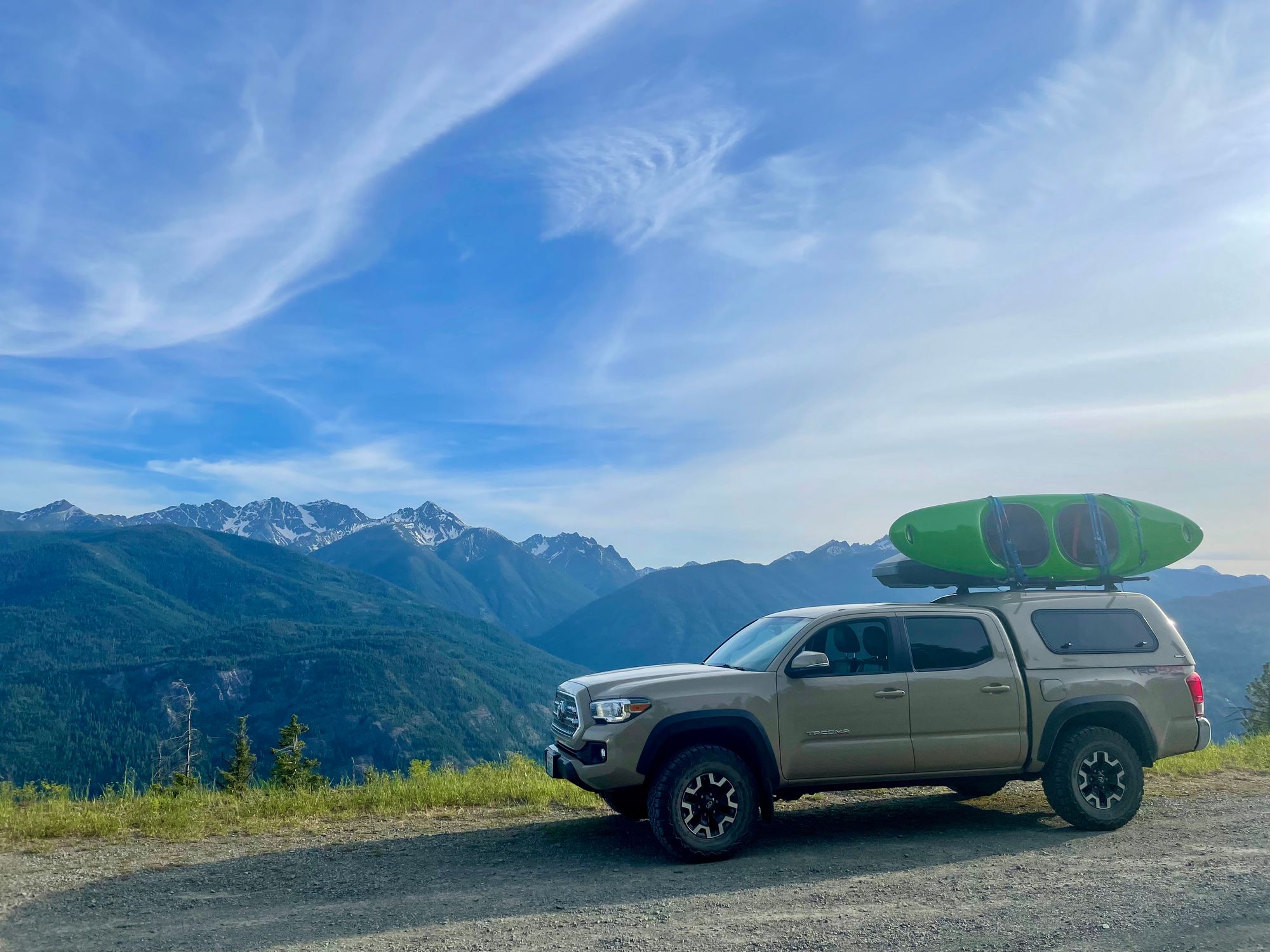
What we use a truck for, getting to remote places with all our outdoor toys, increasingly the scrappy Tacoma is starting to hit the limits. To be fair, we are, by no means exceeing the truck's capabilities. Rather, it simply is becoming obvious we are at capacity, and it likely is only going to get worse as our two boys, currently seven and nine, get older.
Also, one thing I miss more than I anticipated when getting the 2016 is the ability to sleep in the bed of the truck...to have the ability to just stop, crawl in the back, and easily sleep. True, instead of getting the five foot bed, we could have opted for the six foot bed, but if stretching the wheelbase and compromising the turning radius that much, it really defeats the purpose of a small truck. At that juncture, it makes more sense to just get a full-size truck. This brings us to where we are now.
Thus, my wife wants an automatic, and I am yearing for something I can sleep in the back of easily. Futher, our boys are at the age we are able to increasingly do more with them. This means more raft trips, car camping and paddling rivers. All of this means more equipment. We are filling up the back of the Tacoma, even when packing relatively efficiently, and starting to bring the rocket box on top not for convenience, but because this is the only way to fit all our gear.
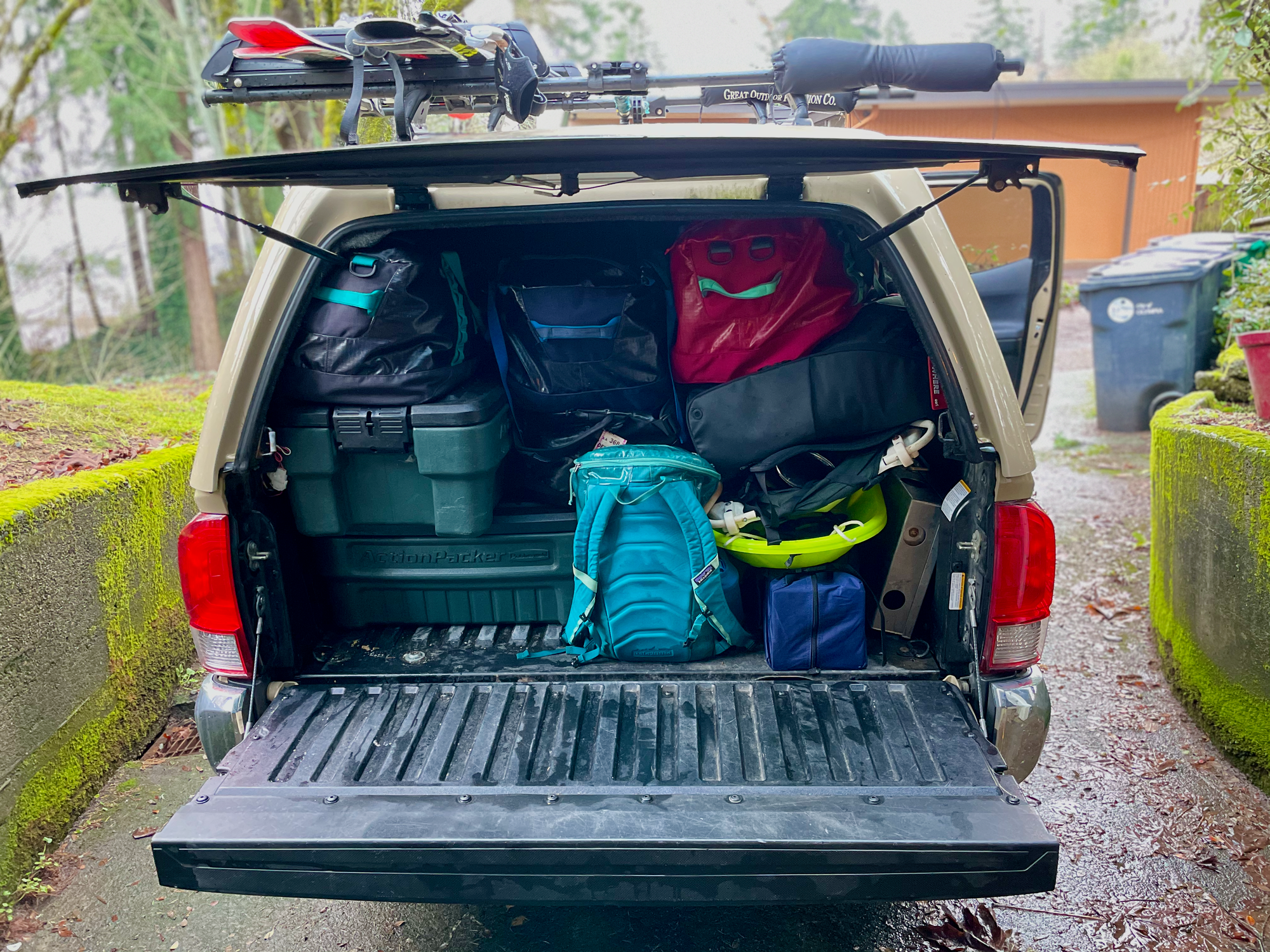
Space is not the only premium. The suspension does all right, but on forest roads, I have to really be careful of bumps and potholes. The suspension has to work for it. True, I know this can be addressed with aftermarket suspension, but the space issue for sleeping and gear still persists. Hence, my reluctant acceptance of needing to step up to a full size.
Based on the above discussion, the primary considerations for a new vehicle include:
- An automatic - but an automatic I do not loathe
- Sleepability - I want to be able to sleep in the back...preferably able to sleep all four in inclement weather
- Capacity - more gear space and payload capacity
- Handling - Suspension to handle forest roads with gear
I have looked around and researched the current offerings in the full size space, and settled on the Ford F-150 as the best option considering the aforementioned considerations. First and foremost, having driven manual transmissions since the 90's, I absolutely cannot stand most automatics I have ever driven. During a test drive, I was pleasantly surprised. I commend Ford on their 10-speed automatic. It really is not bad to drive. The 3.5 litre Ecoboost V6 pulls hard when asked, and works well with the 10-speed. Further, it gets about the same mileage I get with my current Tacoma. I was impressed.
Second, I cannot stand the squishy suspension. I abhor the trend toward making trucks into a luxury car with a truck bed. I like suspension tight. While I understand this is a full size pickup truck, I want it to have tight handling for what it is. Thankfully, the F-150 has a decently tight ride. It drove fairly good, at least for the limited time I was behind the wheel for a test drive. This did not include bouncing down any forest roads, but it definitely did not make me think it was squishy at any time, which is good.
Hence, the truck is drivable by my standards. The engine pulls hard. The transmission works well, does what it is asked when it is asked, and doesn't get in the way of driving. The suspension is decent; the truck has acceptable handling.
The Truck
The F-150 provides a good platform to work from. Since we need a truck to do truck things, I am not interested in paying a premium for frills. We are getting the absolute base model. A 12 inch screen with Apple CarPlay and a backup camera come standard. So does cruise control and air conditioning. Recalling the days when luxury was defined as an automatic transmission and air conditioning, I see little reason to get anything other than the base model.
- F-150 XL 4x4
- SuperCab (full four doors)
- 6.5 foot bed (able to sleep in the bed)
- Vinyl seats
- Vinyl floor
- 3.55 with a rear locker
This provides a great platform. From here, the aftermarket provides a good selection of options to tweak this platform to meet our needs. These include addressing tires, suspension, underbelly armor and putting a topper on the bed.
Sleepability
First, for sleepability, I am going to pair a 6.5 foot bed with a Go Fast Campers Platform Camper. Although two people can sleep in the bed of the truck with just a conventional topper shell from Leer, ARE or Snugtop, this configuration enables two up top and two in the bed, or two up top with gear left in the bed. Either way, it is a lot more flexible, and makes car-camping a lot easier. This enables us to much more easily get away, find a dispersed camping spot in the woods, or sleep for the night before a rafting trip at the put-in. Further, when collapsed, the Go Fast Camper is a very secure shell, so I feel a lot better about leaving gear locked in it at a remote location.

The 6.5 foot bed addresses the cargo capacity, especially when paired with a Go Fast Camper Platform Camper. Assuming the Tacoma bed, with a shell is 60.5" long, 41.5" wide and 40" tall, this gives us just under 58 cublic feet of cargo capacity. The F-150, by comparison, if assuming 78.9" x 58.6" x 40", yeilds just over 107 cubic feet of cargo capacity. This is a conservative estimate, since the height likely will increase as well, but this almost doubles our cargo space.
Further, the payload for the Tacoma is 1,275 pounds, and F-150 is around 2,245 pounds. Even though we likely can put more stuff in the truck, the heavy stuff likely will not change much. Even if considering my current topper is around 175 pounds and the Go Fast Camper is around 285 pounds, this still provides much more capacity. This means the rear springs will feel nowhere near as stressed when trying to get somewhere on forest roads with the truck loaded.
Suspension
The F-150 is an independent double wishbone setup with coilover shocks, a fairly common configuration. It is the same configuration as on my Tacoma. On my Tacoma it is stock. I have always been impressed with how well friends' trucks with upgraded suspension drive on forest roads. The suspension I am referring to is not a lift kit per say, but rather just a suspension kit with significantly upgraded shocks and springs. It configures the suspension more for how I use a truck.
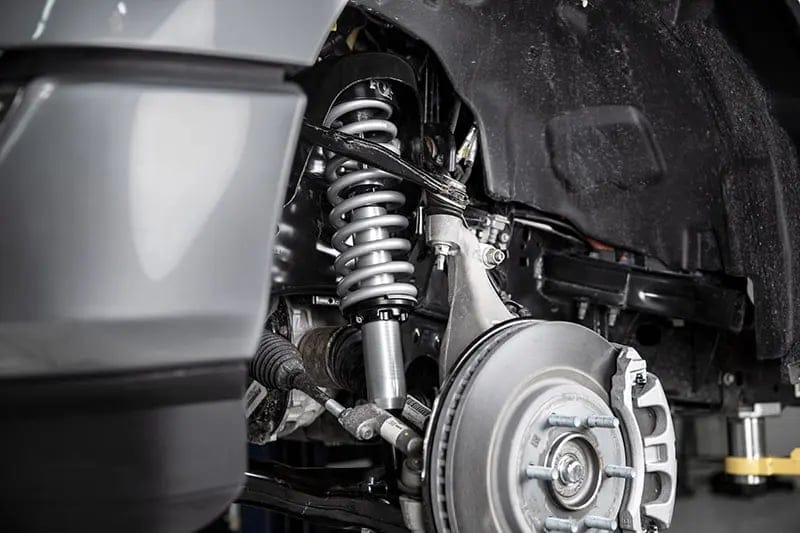
Reading a number of reviews online, the Fox 2.0 leveling kit puts much better Fox two-inch shocks at all four corners, and lifts the front of the truck right around two inches to match the rear suspension ride height. True, Ford set up the bed to be able to squat with a load, but I anticipate we likely will rarely load the truck enough to have it ride tail low. If this is the case, it is easily addressed with an add-a-leaf. The leveling kit also offers more up-travel in the front, a definite plus when trying to get somewhere expediently on forest roads.
Tires
Something I have done on all my trucks since the 90's is add a good set of BFG KO2's. I have never driven anything that provides a more confident grip on loose gravel and dirt. These tires simply claw and grip. This is especially important when trying to get somewhere on gravel and encountering a turn sharper than expected, which only happens sometimes...
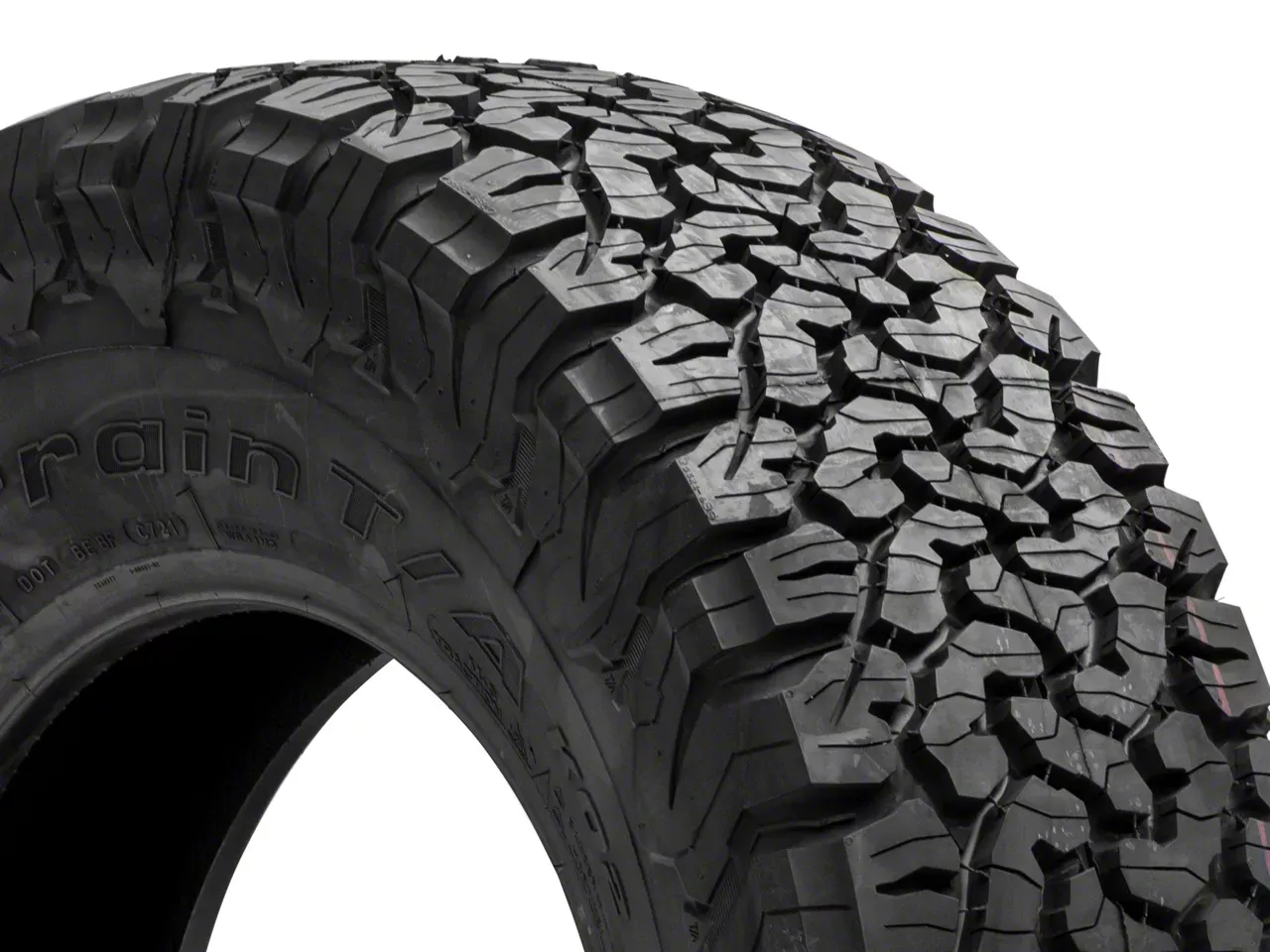
Armor
Although I typically only rediscover the skid plates on my truck about once or twice a year, if they are not there, the damage can be extremely expensive. The F-150 XL does not come with skid plates. You have to get one of the upgraded models to get skid plates, and upgraded models mean a lot more money.

Fortunately, aftermarket skid plates for the F-150 are comparatively easy to come by. Skid plates also facilitate easily putting guards around the catalytic converters to deter theft. Unfortunately, this is a growing problem at trailheads where we live. Hence, for the sake of protecting the engine and transmission from rocks and protecting the catalytic converters from thieves, the F-150 is going to get a set of RCI Off-Road skid plates and catalytic converter guards.
Gear on Top - The Rack Plan
I already have a significant investment in Yakima rooftop accessories. Consequently, I will reuse the Yakima towers from the existing truck shell. These towers are attached to landing pads on tracks, a setup I really like. The racks can easily be removed, but also are solid enough to carry our raft, a quiver of kayaks, bikes and the RocketBox for skis, paddles and rolled up duckies (inflatable kayaks).
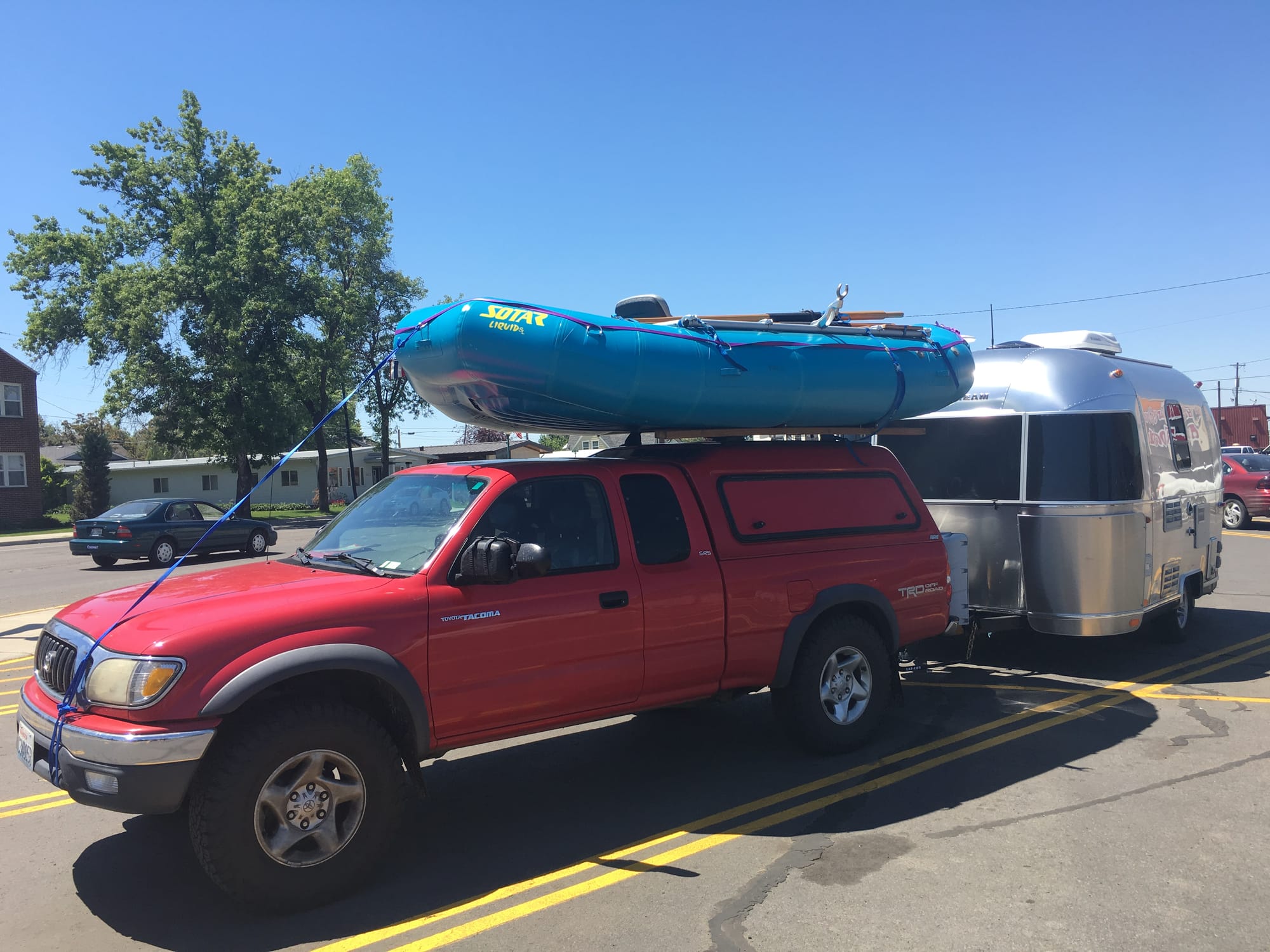
My current Yakima crossbars, since made of steel, are rusting and badly in need of replacement. This is the second set of crossbars I have had this issue with. As a result, although I am going to reuse the towers from the existing setup, I am going to replace the crossbars with aluminum tubing and wrap them with electrical tape for a little additional friction.
The Go Fast Camper, when collapsed, can cary a significant amount of weight on top. This means I can toss boats, bikes and the Yakima RocketBox on top. The camper facilitates attachment of accessories to the sides of the camper, but does not offer a solution for mounting Yakima landing pads. Fortunately, JE Design and Fabrication produces a great solution, YakMounts, facilitating mounting Yakima landing pads to a Go Fast Camper. However, any significant load needs to be removed to deploy the tent.
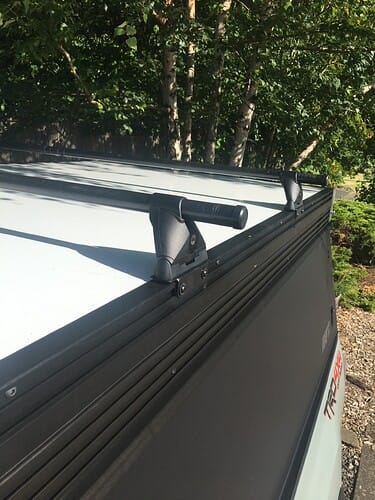
The F-150, as a significantly larger truck than our current Tacoma, the cab alone has a roofline longer than many sport utility vehicles. This means the cab can easily accommodate racks to avoid having to remove the load off the camper to raise the tent. Since I have friends whose entire load has departed the vehicle using the Yakima towers clamping into the doors, I do not trust them. Consequently, this truck is going to get Yakima tracks installed onto the cab with landing pads. This way the racks will be solidly attached and can be easily removed when not needed.
With this cab and camper crossbar setup, we can easily carry boats on the front with the RocketBox on the camper to carry paddles when going kayaking. This will enable using the tent without having to unload gear on top. When picking up more boats during shuttles, the extra boats can easily be tossed in the bed or loaded on the top of the shell if the bed is full. The entire setup can quickly be removed and tossed in the bed or the garage to clean up the profile when not needed.
Current State
We ordered a 2024 F-150 XL. Yes, we had to order it. Dealers do not keep a lot of cheaper (they're still stupidly expensive) models on the lot. You have to order it and wait if all you want is the base model. Consequently, our truck is supposed to be here around the middle to end of May.
I also ordered the Go Fast Camper as well, and scheduled the install for the end of July at their headquarters just outside of Missoula, MT. This will be a fun road trip over there to pick it up.
In the meantime, once we get our basement put back together in a few weeks (another story for another time), I am going to start assembling the parts to be ready once the truck arrives.
